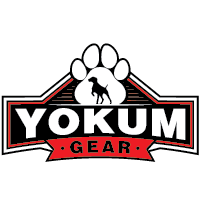Therapy dogs play a crucial role in providing comfort, emotional support, and companionship. Equipping your therapy dog with the right vest not only identifies them as a working dog but also enhances their functionality and comfort. Selecting the right vest involves considering various factors such as material, fit, and features. This article delves into the essential aspects to consider when choosing the perfect vest for your therapy dog.
Material Selection: Durability and Comfort
The material of the vest is one of the most important aspects to consider. A durable vest ensures longevity and withstands constant use. Common materials include nylon, mesh, and polyester. Nylon is known for its strength and resistance to wear and tear, making it an excellent choice for active dogs. Mesh offers breathability, which is vital for dogs that work in warm climates, allowing airflow to keep them cool. Polyester combines durability with flexibility and is often used in vests that are both strong and comfortable.
Comfort is equally important as therapy dogs often wear their vests for extended periods. Soft, padded materials can prevent chafing and irritation, ensuring your dog remains comfortable throughout their service. Always opt for lightweight materials that won't burden your dog, enabling them to move freely and perform their tasks effectively.
Proper Fit: Measuring and Adjustability
A well-fitted vest is crucial for your therapy dog's comfort and efficiency. To ensure the vest fits properly, measure your dog’s girth and chest. The girth is the circumference around the widest part of your dog’s ribcage. Using these measurements, refer to the manufacturer's sizing chart to select the appropriate size.
Adjustability is another key factor. Look for vests with adjustable straps that provide a custom fit. This adjustability accommodates changes in your dog’s size and ensures the vest remains snug and secure without being too tight. A properly fitted vest reduces the risk of slipping, which can cause discomfort or hinder your dog's movement.
Visibility and Identification
Therapy dog vests must clearly identify the dog’s role to the public. Vivid colors and reflective strips enhance visibility, especially in low-light conditions, ensuring your dog is easily recognizable. Many vests come with “Therapy Dog” patches, which can be either sewn on or attached with Velcro. Velcro patches offer the flexibility to change or update information as needed.
In busy environments or during travel, a vest with additional identification features, such as a clear ID cardholder, can be highly beneficial. This allows you to display essential information about the dog’s role and handlers’ contact details, providing reassurance and clarity to those interacting with the therapy dog.
Extra Features: Pockets and Handles
Additional features can enhance the functionality of your therapy dog’s vest. Pockets are useful for carrying small items such as treats, waste bags, or documents. Ensure the pockets are secure and do not add unnecessary weight, which could be uncomfortable for your dog.
A sturdy handle on the vest can be a valuable feature, offering better control and support. Handles are particularly beneficial for handlers who might need to assist their dog or provide guidance in crowded or challenging environments. Make sure the handle is durable and securely attached to the vest to prevent accidents.
Choosing the right vest for your therapy dog is an important decision that impacts their comfort and effectiveness. By considering material, fit, visibility, and extra features, you can select a vest that not only meets the needs of your therapy dog but also enhances their ability to provide invaluable support to others.

